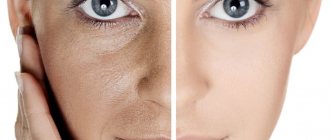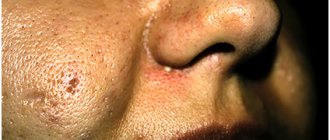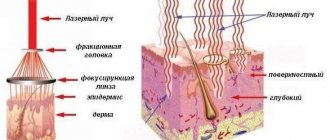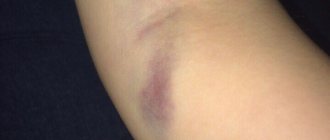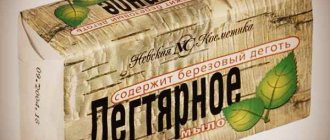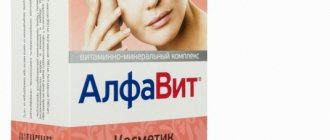Imperfections on the face often prevent girls from feeling confident. Sometimes they cause discomfort and unpleasant sensations on the skin!
But it is worth remembering that every situation has its own solution. It is only important to determine the cause and take the problem seriously.
One of the most popular skin diseases is rosacea, which is the appearance of spider veins on the skin due to the fragility of the walls of blood vessels.
Causes of the disease:
- Heredity. This has long been a proven fact!
- Ultra-violet rays. Harmless sun exposure leads to fragility of vascular walls, as well as photoaging. Therefore, it is very important to use sunscreen all year round.
- Temperature changes and contrasting washes.
- Bad habits.
- Stress provokes the onset of the disease, because due to negative emotions, pressure increases and the walls of the capillaries are damaged.
- Some diseases of internal organs.
- Incorrect care. For example, aggressive salon procedures can thin the already delicate skin and reduce its immunity, which can subsequently injure the walls of blood vessels.
Sensitive skin. Root causes.
There are various factors that cause your skin to be too sensitive. Among them:
- Hereditary traits
- Chronic inflammation, such as acne
- Consequence of procedures with a cosmetologist, reaction to chemical peeling
- Incompetent or too active care
- Menopause, hormonal changes.
And yet, there are pros and cons everywhere. Among the negative factors of sensitive skin is high irritability, and there is also an unpredictable reaction to completely harmless skin care products. The good news is that sensitive skin responds quickly to care treatments and the active ingredients penetrate well into it. If sensitive skin is treated correctly, it will not be difficult to get the desired result.
Stages of rosacea
There are three main stages of the disease:
- First. It is characterized by short-term redness of the face, which goes away after some time without leaving any consequences. Because the vessels in this case are quite elastic and are able to contract to their usual state.
- Second. A vascular pattern is already noticeable on the skin, which means one thing: the vessels cannot return to their previous state.
- Third. Here there is constant redness of the skin and inflammatory processes as a result of chronic microcirculation disorders.
There is also statistics that rosacea is more common in women than in men.
What is rosacea and the reasons for its appearance
Couperosis on the face
- This is a cosmetic defect that appears due to dilated blood vessels. They are visible through the skin and look like “stars” or “cobwebs” of capillaries.
Most often, rosacea occurs in the area of the cheeks, chin, and wings of the nose. Spider veins on the skin indicate fragility and weakness of blood vessels. Vessels that have lost their elasticity lose their ability to contract after exercise, and blood stagnates and expands. This type of imperfection occurs predominantly in those with low-pigmentation and thin skin of phototypes I and II.
According to their configuration, spider veins from rosacea are divided into:
- Arachnids
- Spot
- Linear
Stages of development of rosacea
Spider veins can appear at any age in both women and men. However, statistics show that this problem most often occurs in patients over 35 years of age.
Dermatologists distinguish 4 main stages of the manifestation of rosacea:
- Stage 1
- after a long stay in a hot environment with very dry air, irritation appears on the face. Several dilated capillaries appear on the skin. The problem is local. - Stage 2
- over time, adjacent dilated capillaries unite into one network, the vessels become more noticeable and acquire a pronounced shade. - Stage 3
- the network of blood vessels becomes more noticeable, the redness does not go away on its own and becomes permanent. - Stage 4
- the pathological process affects not only small vessels, but all vessels on the surface of the face. Due to massive capillary spasm, areas of local skin blanching appear, and the capillaries become as visible as possible.
Causes that provoke the appearance of rosacea
Cuperosis is caused by stagnation of blood in the vessels of the skin: the walls of stretched capillaries become thinner and appear on the surface of the skin as a vascular network.
As a result, this can cause increased skin sensitivity, dehydration, irritation, and peeling of tissues. Dermatovenerologist Alexander Prokofiev, medical expert of the La Roche-Posay brand.
The main factors for the appearance of rosacea on the face:
- Vitamin deficiency, namely lack of vitamins A, C;
- Thinning, weakening of the reactive epidermis;
- Taking certain hormonal medications;
- Hormonal fluctuations in the body (imbalance of estrogen and progesterone), for example, during pregnancy or menopause;
- Prolonged exposure to extremely high or low temperatures, for example, during hardening, overheating in the sun, in a bath, frostbite;
- High blood pressure;
- Bad habits (smoking, alcohol);
- Excessive insolation;
- Unbalanced diet: excessively spicy or salty foods are one of the factors that weaken blood vessels.
Care for rosacea-prone skin
There is a cause for the disease, which means there is a solution! To achieve good results, you need an integrated approach.
What does it include?
- Diet. No, you don’t need to eat buckwheat alone! The main thing is to reduce the consumption of spicy and hot foods, chocolate, coffee, and alcohol.
- Complete skin care , which will consist of gentle cleansing, toning and moisturizing. Don't forget about sunscreen in your day care!
- Vitamin therapy is not only for external use, but also for oral administration. Vitamin C is especially important in this situation.
Treatment of rosacea in the salon
In the fight against spider veins on the face, three aesthetic tactics have proven themselves to be excellent, which can significantly minimize such a defect:
- Laser therapy:
a laser is applied to an area of skin, the site of exposure is heated to the required depth, the damaged capillary is “sealed” and smoothed. - Photorejuvenation:
a similar result is achieved through light exposure of the skin. - Ozone therapy:
according to the principle of mesotherapy, it involves the introduction under the skin of an ozone-oxygen mixture that destroys the damaged capillary, but has a beneficial effect on the circulatory system as a whole.
What products to choose for complete care?
We have selected products that will fit perfectly into the daily routine of skin with rosacea.
Cleansing
Sioris washing gel based on plant extracts gently cleanses the skin of impurities and moisturizes.
The composition includes extracts of pomelo, orange, black willow bark, geranium and chamomile oil.
The product does not cause irritation and is ideal for sensitive skin!
Toning
Soothing toner with centella from the organic brand Purito perfectly moisturizes, tones and relieves redness. The composition of the toner helps restore the lipid barrier of the skin and reduce skin sensitivity to irritating factors.
The product, in addition to the main component - centella asiatica, contains witch hazel extract, panthenol, allantoin and hyaluronic acid.
Stage aimed at solving specific problems
Serum with a stable form of vitamin C from Cu Skin is an ideal solution for skin with rosacea . This product helps strengthen the walls of blood vessels, stimulate collagen synthesis, intensely moisturize and relieve inflammation.
Vitamin C is the best antioxidant for the skin, which gives it radiance and evens out its tone!
The product contains camellia extract, forest orchid, hyaluronic acid and betaine.
Is it possible to cure rosacea on the face with cream?
The answer is no.
Unfortunately, it is not possible to completely get rid of rosacea with the help of cosmetics, masks, folk remedies, exercises or self-massage - the dilated vessel will not disappear and will continue to show through under the skin. Dermatovenerologist Alexander Prokofiev, medical expert of the La Roche-Posay brand.
The spider veins are removed in the clinic using special equipment. Cosmetics can soothe sensitive skin, relieve redness, and prevent the appearance of new stars and the expansion of existing ones. Cosmetics only mask the manifestation of rosacea, improve microcirculation and prevent the situation from getting worse.
Enzymatic
You may be interested in: Shower oil “Loccitan”: description, composition, application
Enzyme cleansing helps fight rosacea while moisturizing the skin. Especially notable are the compositions based on enzymes extracted from the milk and stomach of animals.
For self-use at home, take enzyme powder. It must be diluted with water to a thick consistency and applied with a brush for 15 minutes, organizing a warm compress. Afterwards, rinse with water that is comfortable for the face.
Mandelac
This type of cleansing is intended for people who cannot tolerate glycolic acid and are also prone to age spots. The product helps get rid of acne, smooth out wrinkles and whiten the skin surface. Due to the fact that blood circulation increases after the composition, it helps fight rosacea.
Rosacea
Experts are accustomed to using the term rosacea to understand a certain clinical picture: erythema, dilated vessels, and later papulopustular rashes. However, rosacea has several degrees of development and subtypes.
Degree of development of rosacea
- Episodic erythema (rosacea—diathesis);
- I degree - ETR (persistent erythema and single telangiectasia);
- II degree - papulopustular (persistent erythema, numerous telangiectasia, papules, pustules);
- III degree - pustular nodular (persistent erythema, an abundance of telangiectasias, papules, pustules, inflammatory edematous nodes).
There are currently 4 subtypes of rosacea :
- ETR is characterized by persistent erythema of the central area of the face, occurring before or simultaneously with papulopustules (subtype II), telangiectasia, and is accompanied by a burning sensation and tingling sensation.
- PPR - persistent erythema, transient papules and pustules.
- Phymatous rosacea is a thickening of the skin with an increase in the pathologically altered area.
- Ophthalmic rosacea - dryness of the mucous membrane of the eyes, lacrimation, burning, swelling of the eyelids, recurrent inflammation and decreased visual acuity due to damage to the cornea.
Let's move on to diseases that require differential diagnosis with rosacea.
Dr. Konopka's
The basis of the product are extracts:
- cucumber;
- rowan;
- cranberries
Delicate cleansing and restoration of the skin is made possible thanks to the minerals, vitamins and organic acids contained in these extracts. For example, cucumber gives the dermis radiance and smoothness. A small amount of Dr. is required. Apply Konopka's to damp facial skin, massage a little and then rinse with water.
Perioral dermatitis
Synonyms: rosacea-like dermatitis, flight attendant disease - rashes around the mouth: redness, swelling and papules.
Diagnostically difficult to distinguish disease of unknown etiology. Provoking factors : the use of steroids both locally and inhaled, fluoride-containing pastes, occlusive cosmetics.
The main diagnostic differences from rosacea: bright erythema and telangiectasia are rare. Localization: nasolabial folds, perioral region, chin, lower eyelids. Women aged 20-30 years and children are affected.
Distinctive feature : rapid regression of rashes, if a trigger factor is identified.
If visual diagnosis is difficult, a histological examination is recommended.
Ferulic
Ferulic cleansing is distinguished by the fact that it can be performed on sensitive dermis even in the summer. To completely smooth out the affected spider veins, only four sessions should be completed. The gel should be applied in 2-3 layers and left overnight. The procedure is contraindicated for pregnant women and people with individual intolerance.
Lactipeel
This gentle peeling is based on lactic acid, which:
- treats spider veins;
- evens out complexion;
- rejuvenates;
- whitens;
- moisturizes.
The product can be used in the summer, but you can sunbathe only a month after the procedure.
What peelings are prohibited?
The easiest way to understand whether peeling can be done for rosacea is to find out whether this method is aggressive, medium-deep or mechanical. This is a case where professional execution plays an important role. At home, only superficial and soft types of exfoliation are carried out. For rosacea, Jessner peeling is prohibited due to the use of salicylic acid, and the following cannot be performed:
- cryotherapy, due to treatment with liquid nitrogen;
- laser resurfacing;
- diamond peeling.
You may be interested in:Body oil from Natura Siberica: features and types
Soda for rosacea. Base oils
As a rule, treatment of rosacea at home is not complete without base oils. We are talking about Japanese mint, cumin oil, rosemary and lemongrass. Separately, it is worth noting grape seed oil, it contains a huge amount of vitamin P, which prevents the fragility of blood vessels.
About 5 milliliters of grape seed oil must be mixed with a similar amount of wheat germ and avocado oil. To all these ingredients you need to add a small spoon of vegetable oil, previously infused with calendula flowers and St. John's wort. It is recommended to thoroughly rub the finished product into the affected areas of the skin in a circular motion.
To prepare the following remedy, you need to have cypress oil on hand, as well as vitamins E and A in capsules. In a container with a teaspoon of grape seed oil, you need to add a couple of drops of cypress oil and the same number of drops of vitamins of both groups. The finished medicine can be rubbed into cleansed skin before going to bed and added to face cream.
It is also recommended to add sesame oil, as well as tamanu and walnut oils to the masks. All these oils are auxiliary substances for most modern creams for rosacea.
Essential oils:
- Geranium - perfectly whitens the skin;
- Nerol - accelerates the renewal of skin cells and promotes accelerated resorption of vascular points and mesh on the skin;
- Rosemary - increases the elasticity of the vascular wall, tones the skin and regulates its water balance.
You can also use essential oils of cumin, chamomile, lemon balm, black currant and marjoram to treat rosacea at home.
Usually, to prepare a medicine, 10-15 milliliters of base oils (usually wheat germ and grape seed oil) are mixed with a specific or several essential oils at once. Here are a couple of proven ways to combine oils:
- To 15 milliliters of base oil you need to add a few drops of cypress and lemon essential oils. If you regularly lubricate the affected areas of the face with this product for several months, the redness will go away and the vascular network will become less noticeable.
- Approximately 2-3 drops of rosemary essential oil should be mixed with 5 milliliters of milk thistle oil. The resulting product can be rubbed into the skin up to 2 times a day. But it is best to do this after cleansing your face using special products.
- A couple of drops of chamomile essential oil can be mixed with mousse for washing and applied to the face for 15 minutes. You need to be treated in this way for 2-3 months, repeating the procedure 2 times a week.
You can come up with your own recipes by combining essential oils with base oils. You can also add vitamins P, K, A and C in small quantities to finished medicines.
